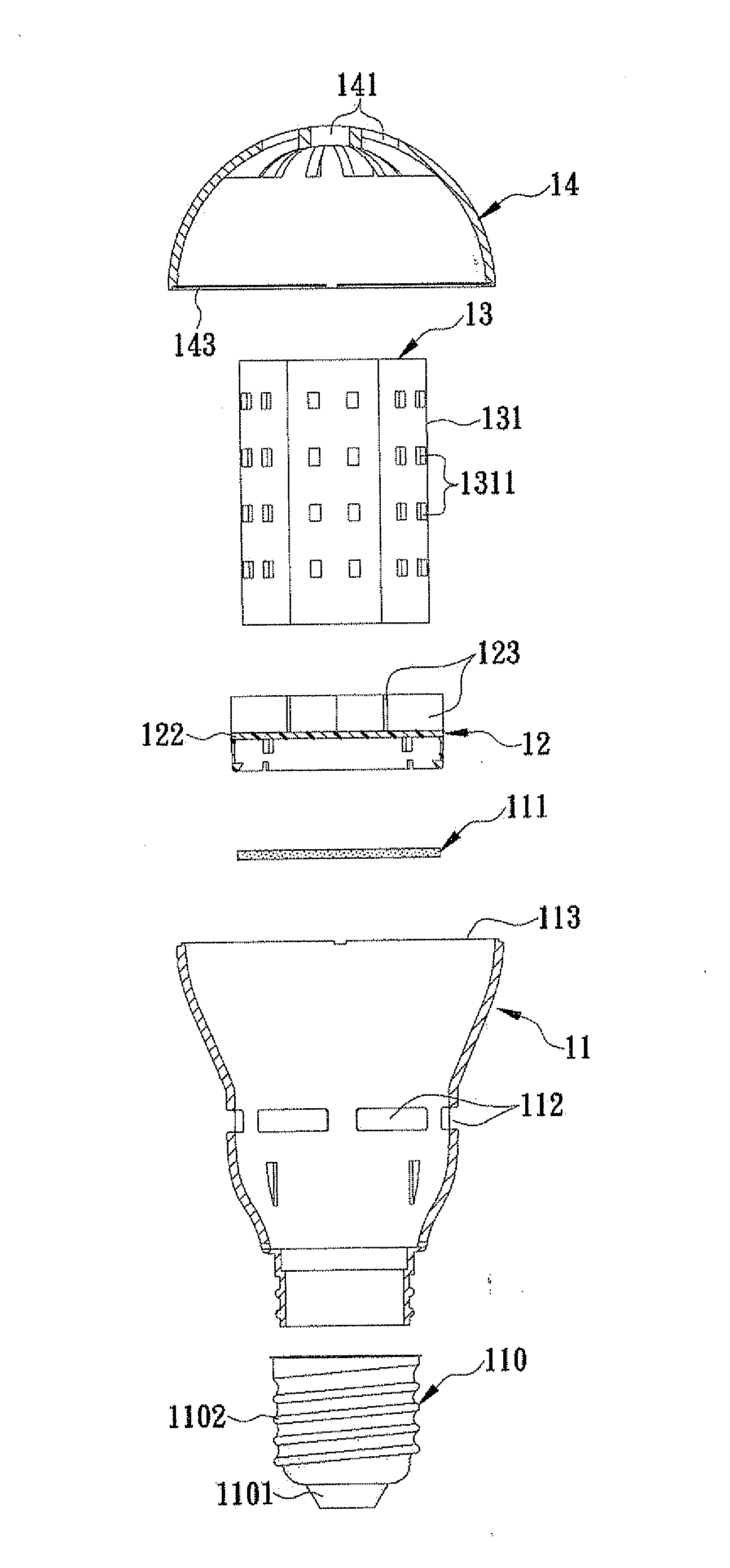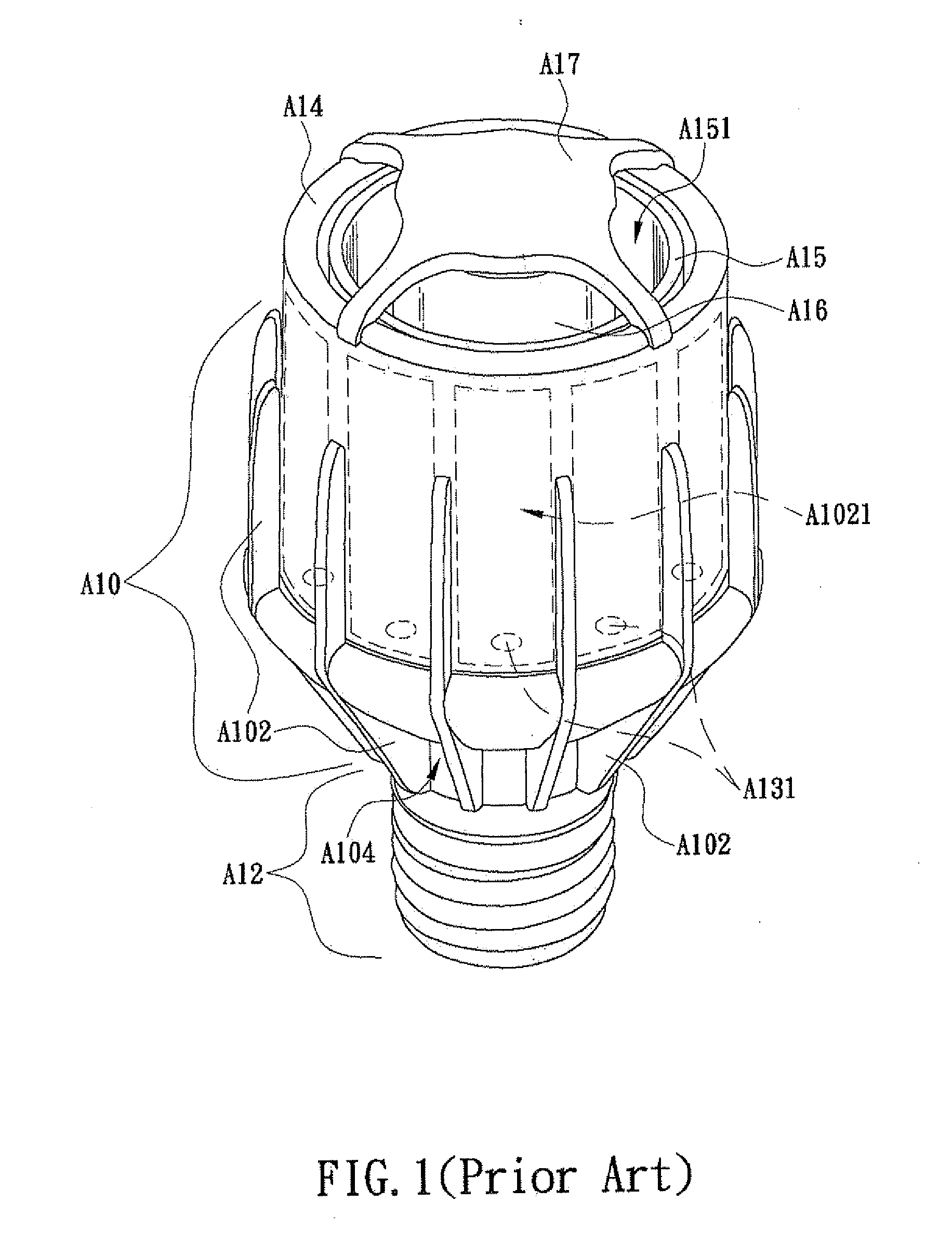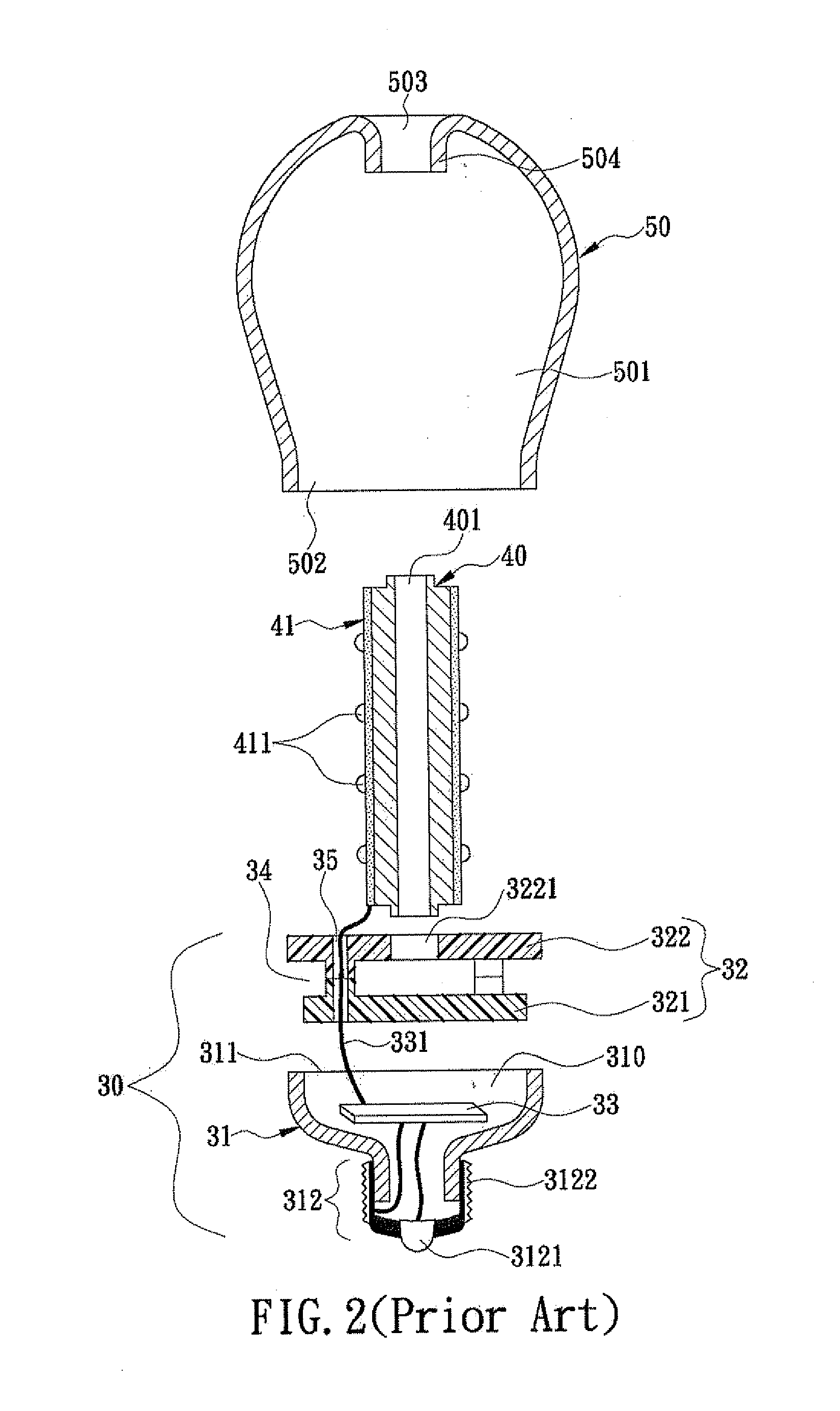Light emitting diode bulb with central axis bidirectional convection heat dissipation structure
a technology of light-emitting diodes and heat dissipation structures, which is applied in the direction of point-like light sources, semiconductor devices of light sources, lighting and heating apparatus, etc., can solve the problems of significant reduction in the service life of led bulbs, bulb structure complexity, and inability to sell to ordinary consumers, so as to effectively avoid user burns and thermal conductivity
- Summary
- Abstract
- Description
- Claims
- Application Information
AI Technical Summary
Benefits of technology
Problems solved by technology
Method used
Image
Examples
first embodiment
[0029]Again referring to FIGS. 4 and 5, the heat sink 13 in the first embodiment is made of a thermally conductive material having a thermal conductivity coefficient higher than that of non-thermally conductive or insulating material. The bottom end of the heat sink 13 is positioned on the top side of the separating unit 12 such that the heat sink 13 can be in communication with the ventilation hole 112 through the convection pathway 121. There is at least one LED circuit board 131 attached to the outer side of the heat sink 13, wherein the LED circuit board 131 is electrically connected to the driving circuit board 111 so as to receive the driving power transmitted from the driving circuit board 111 and drive at least one LED 1311 on the LED circuit board 131 to emit light. The upper cover 14 is made of a light permeable material, and has a top side formed with at least one convection hole 141. The top end of the heat sink 13 is positioned in the upper cover 14 and corresponds in p...
second embodiment
[0034]Again referring to FIG. 8, the bottom end of the heat sink 23 in the second embodiment is positioned on the top side of the second separating plate 223 and corresponds in position to the penetrating hole 2231 such that the central axis hole 232 in the heat sink 23 can communicate with the ventilation hole 212 through the penetrating hole 2231. The outer side of the heat sink 23 is attached with at least one LED circuit board 231, wherein the LED circuit board 231 is electrically connected to the driving circuit board 211 so as to receive the driving power transmitted from the driving circuit board 211 and drive at least one LED 2311 on the LED circuit board 231 to emit light. The top side of the upper cover 24 is formed with at least one convection hole 241. The top end of the heat sink 23 is positioned in the upper cover 24 and corresponds in position to the convection hole 241 such that the central axial hole 232 in the heat sink 23 is able to communicate with the cold ambie...
PUM
 Login to View More
Login to View More Abstract
Description
Claims
Application Information
 Login to View More
Login to View More - R&D
- Intellectual Property
- Life Sciences
- Materials
- Tech Scout
- Unparalleled Data Quality
- Higher Quality Content
- 60% Fewer Hallucinations
Browse by: Latest US Patents, China's latest patents, Technical Efficacy Thesaurus, Application Domain, Technology Topic, Popular Technical Reports.
© 2025 PatSnap. All rights reserved.Legal|Privacy policy|Modern Slavery Act Transparency Statement|Sitemap|About US| Contact US: help@patsnap.com



